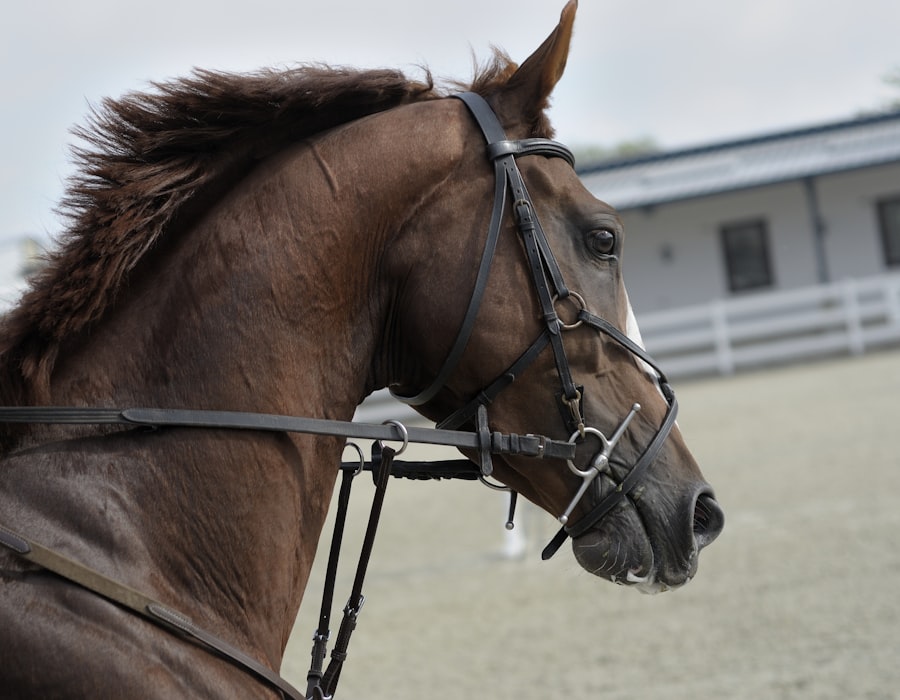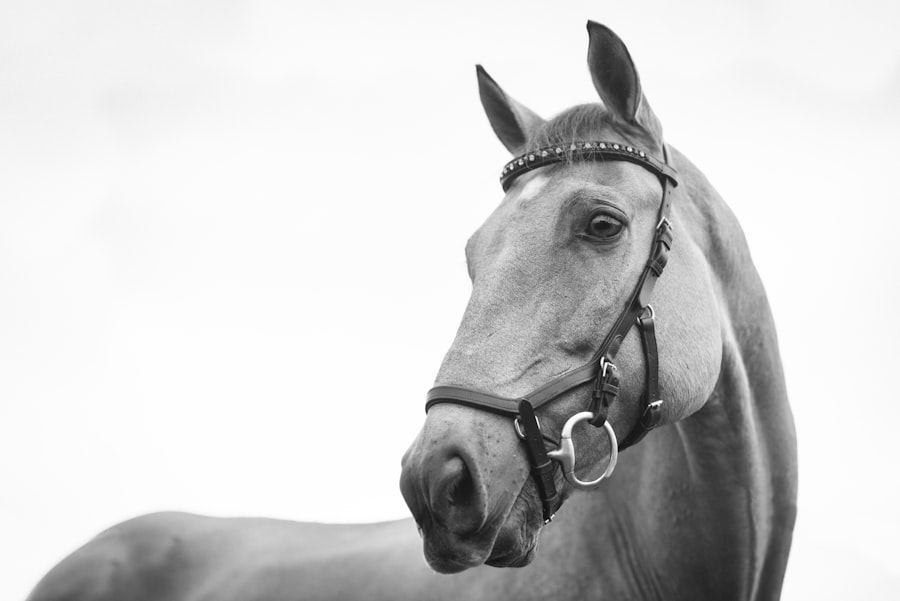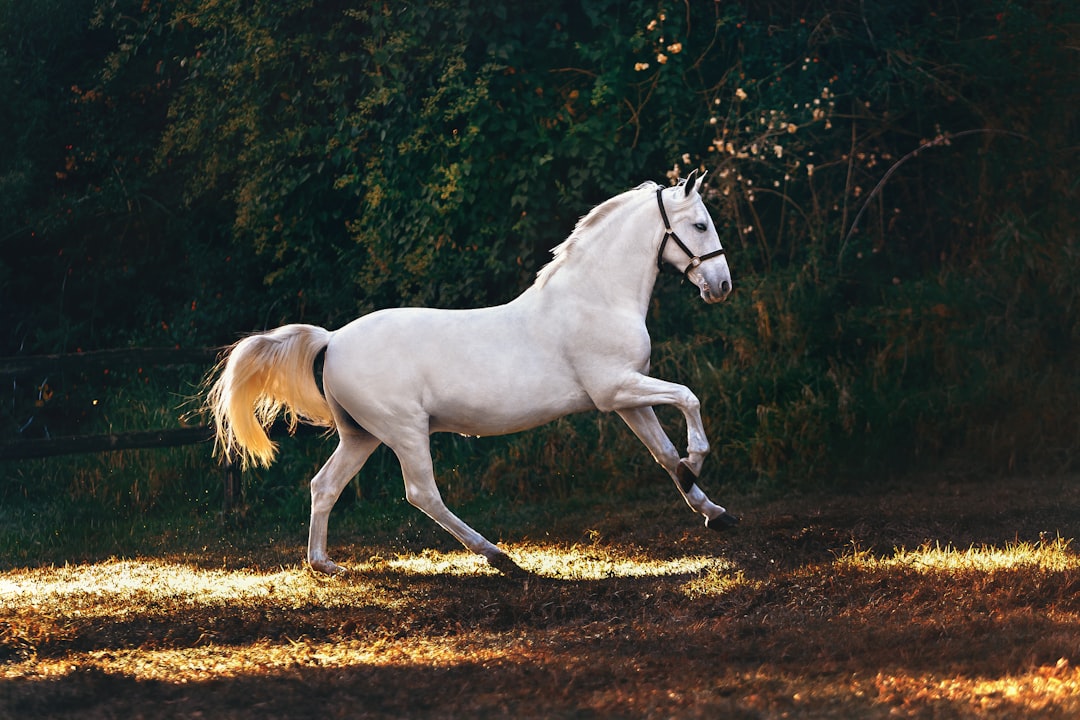Drake’s Passage, a body of water located between the southern tip of South America and Antarctica, is renowned for its tumultuous seas and breathtaking landscapes. This region, often characterized by its unpredictable weather and stunning vistas, has become a focal point for adventurers and nature enthusiasts alike. While many may associate Drake’s Passage with challenging maritime journeys, it also offers a unique opportunity for horse riding enthusiasts to explore its rugged terrain and rich biodiversity.
The combination of dramatic scenery and the thrill of horseback riding creates an unforgettable experience for those who venture into this remote part of the world. The allure of Drake’s Passage extends beyond its geographical significance; it is a gateway to some of the most pristine environments on the planet. The region is steeped in history, with tales of exploration and discovery that date back centuries.
As visitors embark on horseback through the lush valleys and along the windswept coastlines, they are not only engaging in a physical activity but also connecting with the rich tapestry of stories that have shaped this remarkable area. Horse riding in Drake’s Passage is more than just a pastime; it is an adventure that intertwines nature, history, and culture.
Key Takeaways
- Drake’s Passage is a unique and exciting destination for horse riding enthusiasts, offering stunning landscapes and a rich history.
- The history of horse riding in the Drake’s Passage region dates back centuries, with a deep cultural and historical significance.
- The best time to visit Drake’s Passage for horse riding is during the summer months, when the weather is mild and the trails are at their most picturesque.
- The top horse riding trails in Drake’s Passage offer a variety of terrains and scenery, from coastal paths to mountainous routes.
- Horse riding in Drake’s Passage promises an unforgettable adventure, with opportunities to spot diverse flora and fauna while exploring the region’s natural beauty.
The History of Horse Riding in the Drake’s Passage Region
The history of horse riding in the Drake’s Passage region is as rich and varied as the landscapes themselves. Indigenous peoples have long utilized horses for transportation and hunting, adapting their riding techniques to navigate the diverse terrains. The introduction of horses to South America by Spanish conquistadors in the 16th century transformed local cultures, enabling greater mobility and facilitating trade among communities.
Over time, horse riding became an integral part of life in the region, with various groups developing their own unique styles and traditions. As European settlers arrived, horse riding evolved further, becoming a symbol of status and a means of exploring the vast wilderness. The rugged landscapes surrounding Drake’s Passage provided an ideal backdrop for equestrian pursuits, leading to the establishment of numerous ranches and riding schools.
These institutions not only preserved traditional riding techniques but also fostered a sense of community among riders. Today, horse riding remains a cherished activity in the region, attracting both locals and tourists eager to experience the thrill of traversing the stunning landscapes on horseback.
The Best Time to Visit Drake’s Passage for Horse Riding

Determining the best time to visit Drake’s Passage for horse riding requires careful consideration of the region’s climate and seasonal variations. Generally, the summer months from December to March offer the most favorable conditions for outdoor activities. During this period, temperatures are milder, and the likelihood of encountering harsh weather diminishes significantly.
The longer daylight hours also provide ample opportunity for riders to explore the breathtaking scenery without being rushed. However, visitors should be mindful that even during summer, weather conditions can be unpredictable in this part of the world. Sudden changes in temperature and unexpected rain showers are not uncommon.
Therefore, it is advisable for riders to come prepared with appropriate gear and clothing to ensure comfort during their adventures. Additionally, spring and autumn can also present unique opportunities for horse riding, as these seasons often showcase vibrant flora and fauna, making for a visually stunning experience.
The Top Horse Riding Trails in Drake’s Passage
| Trail Name | Difficulty Level | Trail Length (miles) | Scenic Rating |
|---|---|---|---|
| Coastal Canter | Easy | 3.5 | 4.5/5 |
| Mountain Ridge Ride | Intermediate | 6.2 | 5/5 |
| Valley View Trail | Difficult | 8.9 | 4/5 |
Drake’s Passage boasts an array of horse riding trails that cater to riders of all skill levels. One of the most popular routes is the Coastal Trail, which meanders along the rugged shoreline, offering breathtaking views of the ocean and surrounding cliffs. This trail allows riders to experience the raw beauty of nature while enjoying the invigorating sea breeze.
Along the way, riders may encounter diverse wildlife, including seabirds and marine mammals, adding an element of excitement to their journey. Another notable trail is the Mountain Pass Trail, which takes riders through lush valleys and up into the foothills. This route presents a more challenging experience, with steep inclines and rocky terrain that test riders’ skills and endurance.
The panoramic views from higher elevations are well worth the effort, providing a sense of accomplishment as riders take in the stunning vistas that stretch as far as the eye can see. Each trail in Drake’s Passage offers its own unique charm, ensuring that every ride is a memorable adventure.
What to Expect on a Horse Riding Adventure in Drake’s Passage
Embarking on a horse riding adventure in Drake’s Passage promises an exhilarating experience filled with natural beauty and cultural richness. Riders can expect to traverse diverse landscapes, from coastal paths to mountainous terrains, each presenting its own set of challenges and rewards. The thrill of navigating these varied environments on horseback creates a deep connection between rider and nature, fostering a sense of freedom that is hard to replicate elsewhere.
In addition to stunning scenery, riders will likely encounter local wildlife along their journey. The region is home to an array of species, including guanacos, foxes, and various bird species that add vibrancy to the landscape. Knowledgeable guides often accompany riders, sharing insights about the flora and fauna encountered along the way.
This educational aspect enhances the overall experience, allowing riders to appreciate not only the physical challenge but also the ecological significance of their surroundings.
The Flora and Fauna of Drake’s Passage

The flora and fauna of Drake’s Passage are as diverse as they are captivating. The region’s unique climate supports a variety of ecosystems, ranging from coastal wetlands to mountainous forests.
The rich biodiversity offers a feast for the senses, making each ride an opportunity for discovery. Wildlife enthusiasts will be particularly delighted by the chance to observe various species in their natural habitats. Marine life thrives in the waters surrounding Drake’s Passage, with opportunities to spot seals, dolphins, and even whales during certain times of the year.
On land, guanacos roam freely across open plains while colorful birds flit through trees and shrubs. This abundance of life adds an element of excitement to every ride, reminding participants of the interconnectedness of all living things within this remarkable ecosystem.
Tips for Horse Riding in Drake’s Passage
For those planning a horse riding adventure in Drake’s Passage, preparation is key to ensuring a safe and enjoyable experience. First and foremost, selecting an appropriate riding outfit is essential. Riders should wear comfortable clothing that allows for ease of movement while also providing protection against changing weather conditions.
Sturdy footwear with good grip is crucial for navigating varied terrains safely. Additionally, riders should consider their skill level when choosing trails. Beginners may benefit from guided tours that offer instruction and support, while more experienced riders might seek out challenging routes that push their limits.
Regardless of skill level, it is important for all riders to communicate openly with guides about their comfort levels and any concerns they may have during their journey.
The Cultural and Historical Significance of Horse Riding in Drake’s Passage
Horse riding in Drake’s Passage carries deep cultural and historical significance that transcends mere recreation. For many indigenous communities, horses have been integral to their way of life for centuries, serving as vital companions for transportation and hunting. This connection to horses has fostered a rich tradition of horsemanship that continues to be celebrated today.
Moreover, horse riding has played a pivotal role in shaping local identities and fostering community bonds among residents. Equestrian events and festivals often bring people together to celebrate their shared heritage while showcasing traditional riding techniques passed down through generations. These cultural practices not only preserve history but also promote a sense of pride among local populations as they share their stories with visitors who come to experience this unique aspect of life in Drake’s Passage.
Safety Precautions for Horse Riding in Drake’s Passage
Safety should always be a top priority when embarking on a horse riding adventure in Drake’s Passage. Riders are encouraged to familiarize themselves with basic equestrian safety guidelines before setting out on their journey. Wearing helmets is essential for protecting against head injuries in case of falls or accidents.
Additionally, riders should ensure that their saddles are properly fitted and secure before mounting their horses. It is also advisable for riders to stay aware of their surroundings at all times while on horseback. This includes being mindful of other riders, wildlife encounters, and changing weather conditions that may impact visibility or trail conditions.
Communicating effectively with guides or fellow riders can help mitigate potential risks and enhance overall safety during excursions.
The Benefits of Horse Riding in Drake’s Passage
Horse riding in Drake’s Passage offers numerous benefits that extend beyond mere enjoyment of nature. Physically, horseback riding provides an excellent workout that engages various muscle groups while improving balance and coordination. The rhythmic motion of riding can also promote relaxation and stress relief, allowing riders to connect with both their horses and the stunning landscapes around them.
Moreover, horse riding fosters a sense of camaraderie among participants as they share experiences and challenges along the trails. This social aspect can lead to lasting friendships formed through shared adventures in this breathtaking environment. Additionally, engaging with knowledgeable guides enhances riders’ understanding of local ecosystems and cultural histories, enriching their overall experience while promoting environmental awareness.
Why Drake’s Passage is the Ultimate Horse Riding Adventure
In conclusion, Drake’s Passage stands out as an unparalleled destination for horse riding enthusiasts seeking adventure amidst breathtaking landscapes and rich cultural heritage. With its diverse trails catering to all skill levels, visitors can immerse themselves in nature while experiencing the thrill of horseback riding like never before. The region’s unique flora and fauna add an extra layer of excitement to every ride, making each journey a memorable exploration.
The historical significance of horse riding in this area further enhances its appeal, connecting riders with centuries-old traditions that continue to thrive today. As adventurers traverse this remarkable landscape on horseback, they not only engage in physical activity but also forge connections with nature and local cultures that will leave lasting impressions long after their journey concludes. For those seeking an extraordinary equestrian experience combined with stunning scenery and rich history, Drake’s Passage truly represents the ultimate horse riding adventure.
Drake’s passage horse, a term that evokes the adventurous spirit of exploration, is reminiscent of the journeys undertaken by explorers who charted unknown territories. For those interested in delving deeper into the world of exploration and adventure, a related article can be found on MyGeoQuest, a platform dedicated to geographical quests and discoveries. This article provides insights into the historical context and significance of such explorations. To read more about these fascinating journeys, visit the related article on MyGeoQuest.
WATCH NOW! Drake Passage: Earth’s Deadliest Waters Revealed
FAQs
What is Drake’s Passage Horse?
Drake’s Passage Horse is a breed of horse known for its strength, endurance, and agility. It is often used for riding, driving, and light draft work.
Where did Drake’s Passage Horse originate?
Drake’s Passage Horse originated in the United States, specifically in the state of Kentucky. It was developed by crossing various horse breeds to create a versatile and hardy working horse.
What are the characteristics of Drake’s Passage Horse?
Drake’s Passage Horse is known for its muscular build, strong legs, and a compact body. It has a calm and gentle temperament, making it suitable for various equestrian activities.
What are the common uses of Drake’s Passage Horse?
Drake’s Passage Horse is commonly used for trail riding, ranch work, and as a family horse. It is also used for light draft work and driving due to its strength and endurance.
What is the average height and weight of Drake’s Passage Horse?
Drake’s Passage Horse typically stands between 14 to 16 hands high and weighs between 1,000 to 1,200 pounds. It is considered a medium-sized horse breed.
What is the temperament of Drake’s Passage Horse?
Drake’s Passage Horse is known for its calm, gentle, and willing temperament. It is often described as easy to handle and suitable for riders of all experience levels.
